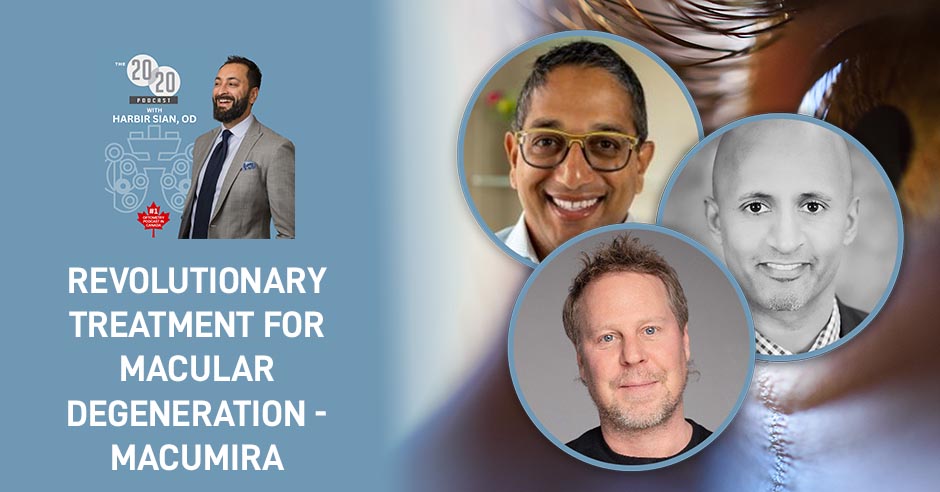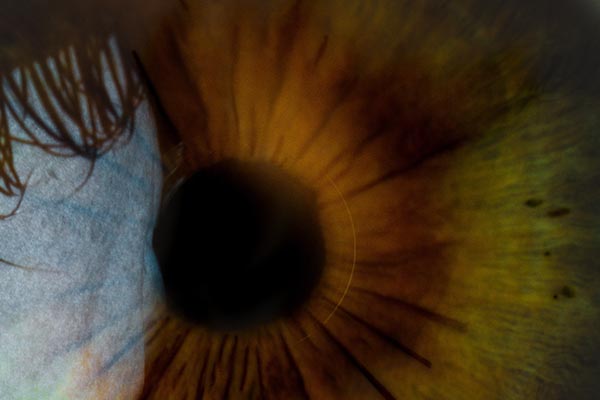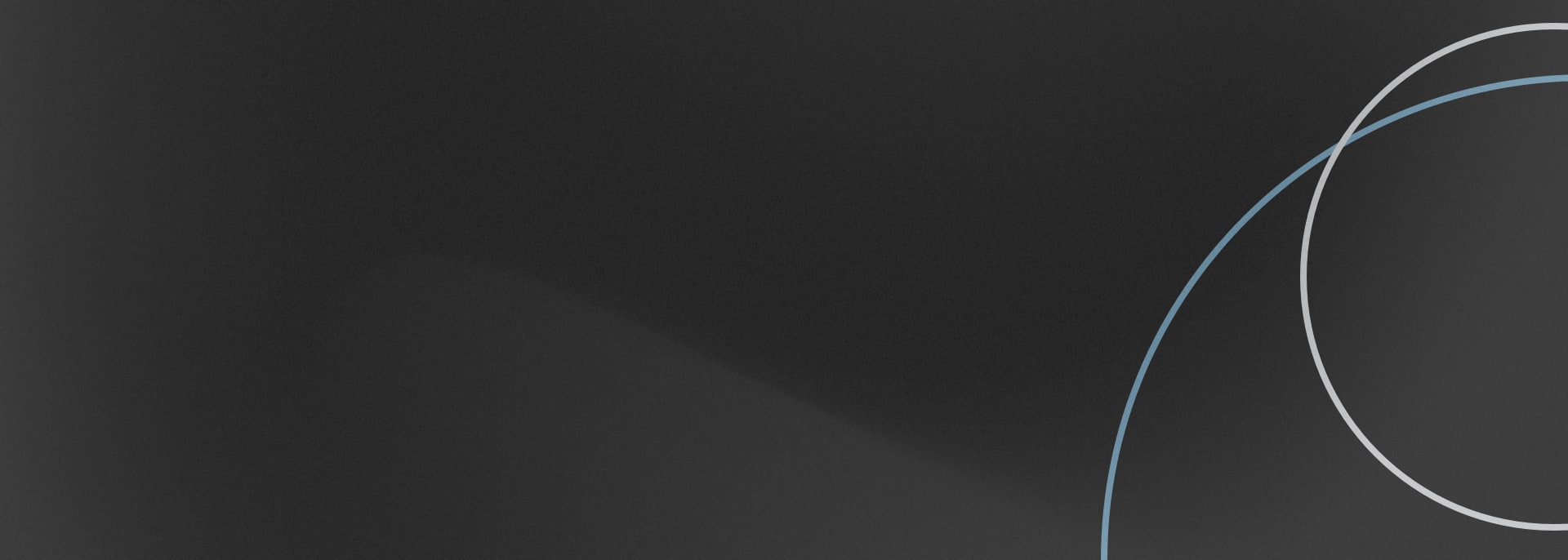
For many years, we have been limited in the solutions we could offer our patients suffering from Age-Related Macular Degeneration (AMD). Either we suggested over-the-counter supplements or asked them to endure eye injections. But thankfully, we now have a new, non-invasive, highly effective treatment for our macular degeneration patients.
In this episode, Justin Sather (CEO), Ravi Tanna (VP of Sales), and Dr. Trevor Miranda share how MacuMira works and how it will revolutionize macular degeneration care.
Learn more at MacuMira.com.
—
Watch the episode here
Listen to the podcast here
Revolutionary Treatment For Macular Degeneration – MacuMira
Introduction And Guest Introduction
Thank you so much for taking the time to join me to learn and grow. As always, I’m so grateful for all the time you take, all the liking and the sharing, and everything you do that has helped the show grow. As always, I will ask a quick favor off the top. If you get some value from this episode, please tell somebody about it. Send a link to your friend, text message, LinkedIn, or put something up on Instagram. Let people know because this is an important conversation. There’s some pretty groundbreaking stuff we’re going to talk about.
Before we get into that, if you’re watching on YouTube, you’ll see that we are live in person. We’re at the BC Doctors of Optometry Annual Conference in downtown Vancouver. It’s one of my favorite places to be every year because I get to be around amazing people. We are going to talk about an amazing treatment called MacuMira. Before we get into that, I want to introduce the three guests that I have here.
First of all, Justin Sather is the CEO and founder of MacuMira. Next to him is Dr. Trevor Miranda, a serial 20/20 Podcast guest, an owner and partner in five clinics on Vancouver Island, and an early adopter and expert in many ways. He’s going to talk to us about his clinical experience with MacuMira. To the far left, we have the one and only Dr. Ravi Tanna, who is the VP of Sales for MacuMira. He has over twenty years of experience in the eye care industry, working for companies like J&J, Alcon, and B&L. He’s bringing a lot of insight and experience to this conversation.
Thank you for being here. I’m excited to have this conversation, and I’m excited to tell people about MacuMira. It blew me away when I started learning about this technology. Why don’t we start with you, Justin? Tell us a little bit about yourself and MacuMira.
I’m the founder of MacuMira. I’m the current CEO. We started about seven years ago, a very small company back then. It has taken us a long time to get here, clinical trials, improving the technology, and improving the company. We were approved by Health Canada in November of 2023. Since then, we’ve been fine-tuning our product and getting it ready for market.
We’ve worked with several doctors in Canada who currently have it. We have about 20 to 25 devices in the field in Canada, with doctors like Trevor Miranda currently using them. They’re getting similar results to what we had in the clinical trial. It’s been going very well. At this event, we’re kicking off the official commercialization and launch of our product in Canada. We’re very excited to be here and happy to be helping Canadians with dry AMD improve their vision.
That’s something I didn’t say off the top. We should tell people what MacuMira is and why it’s so groundbreaking. MacuMira is the first clinically approved treatment for dry AMD in North America. It’s very exciting because how else do we treat dry AMD otherwise? Take some supplements and wear sunglasses. This is the first thing that’s actively helping people see better.
We’re helping instead of hoping. In macular degeneration, this new treatment helps people see better, not just stop things from getting worse.
I’m excited to talk to you guys about that. Before we get to Trev, because we’re going to talk about clinical stuff, I want to talk to you, Ravi. You’ve been in the industry for over twenty years with companies like B&L and J&J. This is a big jump. You’re with a different company in a different sphere of eye care. What brought you to MacuMira?
Ravi’s Personal Story With AMD
First of all, I love the optometry space. It is my favorite place to be. I keep coming back to it time and time again in my career. I think you guys do a great job with patient care, but also running a practice and running a business. I had a pretty comfortable career in contact lenses. I love that space. I’ve been wearing them for a long time. My dad had macular degeneration in the last five years of his life, and I saw him struggle. I drove him to all of his ophthalmology appointments.
I remember the first time, we were in Calgary, in the ophthalmology clinic. I asked the ophthalmologist, “I work in eye care. Can I come in and watch the procedure?” He’s like, “Yeah, no problem. I have to warn you, it’s a bit intense.” I’m like, “No problem. I got this.” I sat there probably this distance away from my dad. I saw the needle go into his eye for the first time. I got cold sweats. I grabbed the table and I’m like, “We’re going to do this for the rest of your life, every six weeks.” It was impactful for me that my dad was a physician his whole life, and now he was the patient. It was tough for him.
You have a little piece of memorabilia. I want you to share that if you don’t mind.
My dad was an avid photographer. He had done that since his 20s, and this is the first camera he ever bought. He was 27 years old. He bought it in 1966 in Germany. I found this a couple of years ago in his garage after he had passed away. His plan when he retired was to do photography, like take a thousand pictures a day. Because he was struggling with his vision and he lost his central vision, which is so critical for photography, he couldn’t do that. AMD robbed him of that.

I felt like the universe was calling me when Justin and I spoke. There was a way that, through our friends in optometry, we could help ODs intervene much earlier in the disease state and change people’s trajectory. I wish my dad had this, and he didn’t. This is an important piece for me. Thanks for asking me that question.
Thank you for sharing that. It’s a very powerful story. It’s poignant and sad, but important to know that we can help people in this position to see better and live better lives. Let’s talk a little bit about the clinical trial. I don’t know who wants to take this one, but there were clinical trials that showed how well MacuMira works. I’d love to share with the audience what they were testing and what improved over what period of time. Whoever wants to speak, go ahead.
In the clinical trial, the main outcome we were testing for was visual acuity. In our treatment group, patients improved by an average of 8.8 letters in visual acuity, which is quite phenomenal with this disease and somewhat unheard of. That was in the treatment group. In the placebo group, patients’ vision decreased by an average of 2 letters. This was over a six-month trial period. Patients would come in.
That’s like a 10.8-letter difference if you look at that. The placebo group lost 2 letters. The treatment group gained 8.8 letters. That’s a huge difference.
It’s a massive difference. How the treatment works, patients come in, they receive four treatments in the first ten days. Treatments are 32 minutes long. They’re non-invasive. They’re mostly seniors that we’re treating. A lot of them fall asleep during treatment. It’s a non-invasive painless treatment. We can get into that a little bit later on. I’ll show you the device here. The outcomes were phenomenal. They get four treatments in ten days, and then they get one treatment every three months. The results were phenomenal. We applied to Health Canada, and we were granted approval. We’re the first company in Canada to offer a treatment for dry age-related macular degeneration.
Dr. Trevor Miranda, I know you are excited to talk about the nerdy stuff behind the scenes here. How does MacuMira work? What’s happening with the device? We’ll look at the device in a moment, but let’s talk a little bit about the science. What’s going on in the eyeball that’s making this work and giving people this improved visual acuity?
How The MacuMira Device Works
The theory of the mechanism of action here is working on the mitochondria. As we know, that’s the energy powerhouse of the cells, and turning them on and rejuvenating them. I like to wrap all this AMD treatment into what I call retinal rejuvenation. We’re taking the mitochondria, the devitalized cells that have been traumatized over time with age. Before they die, can we bring them back to functioning better? That’s what’s pushing and pulling the visual acuity to be better.
MacuMira is indicated to improve visual function in patients with dry AMD. That’s a key point for practitioners out there. That’s what it does. It helps your patients see better. Functionally, we’re improving their ability to see, which is super powerful. Structurally, what is happening exactly is we’re trying to understand better what is happening on the structure side. This is my personal view. It’s working on mitochondrial ATP production, rejuvenating devitalized mitochondrial organelles within cells within the photoreceptors, and helping you see better.
Patient Experience And Feedback
That’s what people come to us for, generally speaking. It’s to see better. It’s nice that we have a treatment that will give people that noticeable difference in their vision. A lot of times, there are different treatments we may offer or supplements they’ll take, and they don’t notice their vision getting better. We’re just stabilizing or making sure they don’t get any worse. This is giving people that difference in their vision. As a practitioner, it would give me confidence that I’d want to give this treatment to a patient because I know I’ll get feedback from the patient. I’ll get the result that we want to see.
I put it this way. We’re helping instead of hoping. We’re helping people see better, and that’s what glasses do. That’s what we’re used to doing. In macular degeneration patients, we’re typically hoping they don’t get worse. It’s a pretty amazing switch for me and my patients. When you say, is it immediate? It is almost immediate.
Within that loading phase, they’re going to notice improvements and it’ll start to ramp up. We’ll get them to a plateau, but the patients that I’ve treated all book back in three months for their repeat treatments because they’ve realized it has improved their vision. We measure it, of course. We can say, “This is what you were seeing and this is what you are seeing,” but they report subjectively improved vision.
That is maybe the more important thing. It’s one thing to look at black letters on a white chart and say, “You can read more,” but what it’s like in the real world is what it comes down to.
In the study, as per Justin’s point, contrast sensitivity improved to a large degree, on par with that large visual acuity differential. As you know, Dr. Sian, contrast sensitivity is a big indicator of visual function. That’s a key piece here. Health Canada indicated it for improved visual function, not just acuity but visual function, which includes things like contrast sensitivity. My patients are reporting things seem brighter, things seem better, less afterimages, and that type of thing.
That’s the quality of their vision, not just the quantity of the letters. That’s so important. We understand the effect is happening to the mitochondria in the retina in the photoreceptors. It’s rejuvenating them a little bit, giving us better contrast sensitivity, and enabling us to read more letters. Can we look at the device? Let’s see what it looks like. How do we put it on? What’s the patient’s experience with the device when they have it on? Let’s get that set up.
If you’re tuning in on the show, I get it. If you’re driving or something, keep driving. Don’t open YouTube. At some point, go to YouTube and open this up because I want you to see this device. It looks like a BIO headset. Ravi here is modeling for us. We’ll get some close-up shots of this at some point too. Ravi is putting it on and showing us how it looks. There’s a little I assume metal. What would you call those little eye cups that sit on the outside of the eyelid? Ravi, tell us a little bit more about what it feels like and what’s going on.
What we’ll do is our team will go in and train the staff in a clinic. First of all, position the device, put the headset on, position the front microcurrent piece, and get the eye cups in place. There will be gel on the patient’s eyes. We’re not going to put gel on today, although you guys might surprise me because my eyes are closed. The microcurrent transmits through the eye cups, as Trevor described, and helps enhance the mitochondrial function in those cells.
This headset is hooked up to a tablet, which will guide the staff through the treatment process over 32 minutes. Especially if staff is already adept at doing IPL or their dry eye treatments, it’s a very quick learning curve for them. If they’re not currently doing that, we will train them. We’ll be shoulder to shoulder with them and get them confident with the procedure so that after we leave, the staff will be able to do procedures 2, 3, and 4 in that first ten-day loading phase.
You can probably take that off. I appreciate you doing that whole segment with the eye cups on, clearly showing us that they’re not that uncomfortable. Tell us then, what is the patient feeling when they have the device on and things are running?
The patient is relaxed. The technician is there with them. It’s not just “hook it up and we leave.” They’re there, walking them through it, and having a little chat. The relationship that our retinal technician builds with the patient is important too, holding their hand through the process. We check acuities every time to let the patient know they’re improving. We are reassuring them that this is a safe treatment and that they are improving, and showing them the differential.
The tech is sitting next to them and they’re chatting most likely. Do some people fall asleep? Is that a thing? Is that okay?
We don’t want them to fall asleep so that it falls off. It depends on how they’re seated as well. You want to make sure that they’re feeling comfortable. We check in with them. Often, our technician will also do some other admin work on a computer nearby. We’re trying to be efficient with our practice as well, but you can multitask there.
Sounds good. How about the patient’s eye position with their eyes closed? Does it matter if their eyes are rolling or moving around or anything like that? I assume they’re most likely going to have them looking straight ahead. That’s not something that you have to necessarily remind them of, “Make sure your eyes are straight ahead and you’re not looking around.”
Trev, you started telling us a little bit about what it looks like in your office. You have the technician there. They’re maybe doing a little bit of work while they’re chatting with the patient in those 32 minutes. How would somebody who is bringing this into their practice, what would be the process to implement it? I know Ravi talked a little bit about how you’re there for training, but more about the protocols within the office. Let’s say you have an AMD patient you’ve diagnosed in your chair. What’s the next step for that person?
The question is where to treat along the pathway of AMD. In early AMD, a lot of times the patient didn’t realize it until we showed them the scans, the drusen, and the damage. Their vision was okay. The indication is to improve vision, but I believe the future will be that we’ll treat more upstream. We’ll slow it down and we’ll prove over time structural improvement. It’s not been proven yet,
In some cases with my patients, I can show improved acuity and improved OCT scans, functional improvement, and structural improvement. It’s pretty exciting. We’ve started a community for practitioners who are interested called MyRetina.ca. These are for ophthalmologists and optometrists who want to learn and share cases and discuss them. That case is up there, which is great.
I feel like you’re beginning to make a strong case for the upstream use of this. I know this is not what it’s indicated for. We don’t want to get too far down that path. That’s beginning to make a case where you could use this as almost a prophylactic or in advance, knowing that this patient is predisposed or perhaps in the early stages of AMD.
Can we slow down macular degeneration progression? Can we push it out for 10, 15, and 20 years, and then reduce what happened to Ravi’s dad, where you go blind in your retirement years? Could we do that? I believe yes, that is going to happen. I believe that the science to prove that and the studies will come over time. We’re going to be utilizing things like AI to review scanning technology to look at what are the indicators and how these patients are improving. There are some exciting things coming.
Can we slow down macular degeneration and push it out 10, 15, 20 years? I believe yes, and the science will prove it.
My personal opinion, to answer your previous question, is when we have a patient with AMD, you have to let them know what the risks are and what the options are and let them decide. Shame on us if we don’t expose them to what’s possible. What is possible is treating them with MacuMira retina rejuvenation, nutraceuticals, or whatever that encompasses, like sunglasses, and doing everything you can to help preserve their vision so their vision can outlive them.
Training Clinics And Implementation
“Your vision outlives you.” That’s a powerful statement there from Dr. Trevor Miranda. I love it. We have the patient in the chair, and we’ve decided that they could benefit from MacuMira. What’s the next step? You’re going to the front desk, the staff is booking them. You have a separate room where they sit. What would I need in my office to make sure that I can adopt this?
Just like dry eye, it’s the same thing. You’ve diagnosed dry eye and you’ve diagnosed AMD, now you made recommendations. You’ve recommended retina rejuvenation with MacuMira. There’s a fee associated. There’s a discussion on how that takes place. The doctor makes the recommendations. I leave it like that. My technician team will follow up either in real-time or a little bit later if we need to, and discuss what that looks like.
Four sessions, 32 minutes within 10 days. This is the fee. You’re then going to be treated every 2 to 3 months to maintain that visual and functional improvement. They need to know what they’re entering into. Some patients will say, “No, I’m feeling okay right now, but it’s good to know,” or some patients will be like, “Yes, I have 20/25 vision, and I want to be better.” We treat those and they’re some of my best patients. They keep booking back. They’re down to 20/20 minus from 20/25 minus, and they love it.
I have patients that I’ve treated who are 20/100 who went to 20/80, and love it because they recognize an improved vision. They can adapt over time. They’re like, “This is my new normal,” and they don’t notice any improvements, but then you have to educate the patient. You still need to maintain those treatments to keep that plateau part. It’s part of the education. I think practitioners are going to have to wrap their minds around how they’re managing these patients. There’s a certain amount of cells that are damaged and they’re gone. Can we revitalize and save or slow down the devitalization and atrophy of the cells that exist?
This is about giving people their vision back. Patients have gone from 2100 vision to 2080, and it’s truly remarkable.
There’s a lot of education that’s going to need to happen. Somebody like myself, bringing this into my practice, will have to develop the talking points, the protocols, and everything, who’s going to follow up with the patient, what are they going to say to the patient, what are the fees, and all of these things. Any specialty that you’re bringing in, you have to set those protocols ahead of time. Other than that, it seems like it’s pretty easy.
I’ll touch on the training real quick, if you don’t mind. On the training, typically what we like to do is call ahead and say, “We’re coming in on next Wednesday or the 23rd,” or whatever that date may be. We’ll say, “Book in 2 or 3 dry age-related macular degeneration patients, and we’ll treat them while we’re there.” We’ll train the staff. Ravi or myself will come in, or one of our other sales team will come in, and we’ll treat the first patient that’s in your office. We’ll treat them with your tech, yourself, or the doctor there.
We’ll watch and explain the device, go over everything, and they’ll watch as we treat the first patient. The next patient that comes in, the tech, yourself, or the doctor will treat that next patient, and we’ll oversee, watch, and advise on it. The same thing will happen with a third patient. Typically, by then, we’re done and your staff is fully trained. It only takes three hours to train your staff. I don’t think it was more than 3 or 4 hours to train a staff. It’s very easy to operate and very user-friendly. The training goes by pretty quickly.
What’s next? You have the Health Canada approval. We have a few early adopter doctors who have it already. You have your official launch. What’s next? What’s the big plan? What do we want to see from MacuMira in the next 12 or 18 months?
We’re hopefully going to expand pretty swiftly in Canada. We have about 25 devices currently in the market, with doctors like Trevor Miranda using them. Hopefully, by the end of this year, we have 200 or 300 ODs using our device. We were approved in New Zealand. We should be approved in Australia relatively soon. Hopefully, we’ll expand to Europe, the United States, and Asia as well.
That is a bit of a long road, but that’s somewhere we’d like to be in the relatively near future. We’re all from Canada and we all live here. It’s the first place the device was approved in. We want to help as many Canadians see as we possibly can, and hopefully become the standard of care for treating dry AMD in Canada.
I love that. We have the opportunity in Canada as ODs and as healthcare providers to be the gold standard for the world in this specific thing. We can be proud that this came from Canada, and we in Canada are the ones who are treating it. Other countries and practitioners will look at us with envy to be able to do what we’re doing. That’s an opportunity we have to be able to take advantage of that. I think it’s a great idea. What other final important things do we want to share with the audience before we wrap up?
Maya Angelou said, “Do the best you can, but when you know better, do better.” That sticks with me because I know I can offer my patients something better. It’s incumbent on ODs to educate themselves on how they can best manage their AMD patients. What is the best thing you can do to prevent your patient from going blind? It’s a big calling.

It pulls my heartstrings when I even say that. It gives me chills because I know it’s a responsibility to do the best I can for my patients. Hopefully, we’re educating each other as colleagues. This is something new. This is something different. Instead of hoping they don’t lose their vision, we can improve their vision. If you’re not going to bring this in, you need to find clinics around you that are going to do it and refer those patients to your colleagues for treatment.
We can’t just hope people with AMD don’t lose their vision. This treatment offers real improvements in both vision and quality of life.
That’s what I say. It’s your ethical responsibility to present all the options to your patients and inform them. Hopefully, companies like MacuMira and our platform at My Retina can help educate the community so that we can share best practices. That’s what I’d say. This is pretty awesome. We need to get everybody at least to know about it.
Do you have any good typical patient stories that you can share with us where you’ve treated a patient and it has greatly improved their quality of life? Any tidbits from patients you’ve treated?
That’s the beauty of what we do sometimes when we have patients. We make a huge difference in their lives. I have a patient case who went from 21/50 to 20/80 in one eye. and 20/100 to 20/50. Pretty remarkable vision. She goes, “I can see my face now,” and she cried with one of our doctors. They both cried after she came in, and the scans looked better. It’s incredible when you can make differences like that. We’ll know more as we get this out there and as more cases are shared amongst the practitioners. It’s the early adopters like me that started it, but it’s the community at large that’s going to make this the gold standard.
Impact On Patients’ Lives
Maybe a final comment on the fulfillment in helping a human being in front of you. I was in a clinic in Calgary two weeks ago. I was there for the patient’s first treatment and for their fourth treatment. We talked to this gentleman and said, “What are you noticing?” We did the acuity. His acuity went from 20/80 to 20/50 in his left eye, and from 20/50 to 20/25 in his right eye. It saved his driver’s license. I asked him, “On a day-to-day basis, what are you doing? What are you noticing? What are you enjoying?” He said he watched the Australian Formula One race. He’s like, “I could see the leaderboard. I could see the drivers’ names.”
The cool thing was that his wife was there with him in the treatment room, sitting in a chair, observing, so I got a chance to talk to her as well. She said that on one of their first dates in 1964, they’re Dutch, they went to the Formula One race in the Netherlands. That was one of their first dates. I said, “It’s 60 years later, and you’re watching this on TV.” It was an amazing full-circle moment. The doctors were on cloud nine. The two doctors that were there were so happy and fulfilled.
When I came home at the end of the day, my wife looked at me. She’s like, “What happened today?” I’m like, “It was an amazing day.” I saw my dad in the chair through this gentleman, through this patient. I saw the staff, I saw the doctors, and we all had a hand in making this gentleman’s life better. There’s a person that’s waiting in your clinic tomorrow that can be helped. Let’s try to help.
That’s incredible. That’s powerful. Thank you. We were thinking about potentially ending the story with your dad, as we started the interview with him. That was another beautiful powerful story. I think it’s a great way to sum up everything we talked about. It was wonderful. I don’t want to make light of that, but anybody who is watching Formula One these days doesn’t need to see the leaderboard because it’s always Max Verstappen at the top anyway. It doesn’t matter. Anyway, that’s an incredible story. Thank you for sharing that. Any other final words you guys want to share before we wrap up? I feel like that was a great story.
We hope to have some webinars coming out to help educate the community. Look for that on MyRetina.ca. That’s important. It’s free to join. If you’re an optometrist out there, get on and educate yourself. That’s what I’d say. It’s on you now. Learn more.
You can go to our website, MacuMira.com. If you can see the information behind us, we’re easy to find online. We’re looking to expand throughout Canada and hopefully have lots of devices in every province to help optometrists help their patients with dry AMD see better.
Beautiful. Make sure you check it out. If you’re tuning in, go to YouTube and watch this so you can see what the device looks like, see how it works, and see Ravi sitting there with his eyes closed for five minutes, giving us his spiel. It was pretty impressive. Thank you, everybody, for tuning in. We’ll see you in the next episode.




